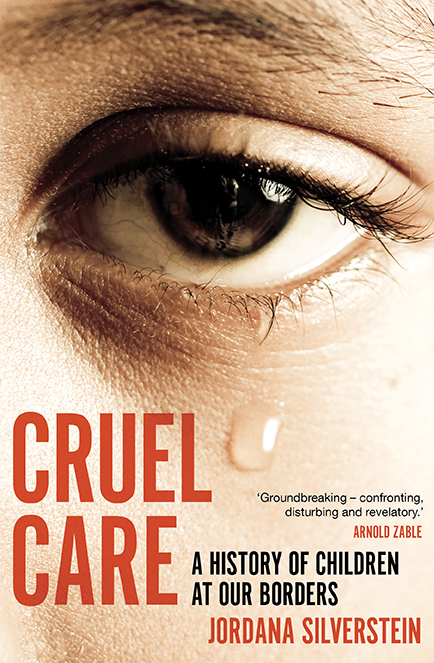Like other Australian observances this year World Refugee Week has been overshadowed by the Referendum on the Voice to Parliament. The conjunction of the two causes is appropriate because the First Peoples and later refugees have suffered in similar ways. They have bookended the Australian story.

A recent book by Jordana Silverstein fleshes out the connection. She discerns a direct link between the way in which the colonial settlers dealt with Indigenous Australians and the treatment of refugee children. The colonists wanted free land and secured it by driving off the First Peoples, corralling them and destroying their links with their culture. They justified this by seeing themselves as the builders of a more advanced, more hospitable white world. They saw Indigenous children both as people in need of salvation through assimilation to white society and also as a threat to colonial society if allowed to grow into an uncontrolled Indigenous population. They therefore stole and dispersed their children, controlled Indigenous lives in detail, and saw themselves as benefactors. Underlying the way in which they treated Indigenous people and their sense of themselves was anxiety about the fragility of their colonial possession of the land. This found expression in control.
In Cruel Care Silverstein focuses on the actions, the laws and the rhetoric of Government ministers, politicians and public servants in their treatment of child refugees. The reflections of those who agreed to be interviewed – mostly in office during times of a comparatively liberal policy – are most illuminating. They reveal the challenges they perceived to manage the public response to the suffering of children and to finesse the understanding of what was in the children’s best interests. These challenges were most exigent when introducing such inhumane policies as turning back boats and sending people who sought asylum to Manus Island and Nauru. This was represented as a humanitarian measure to prevent children from being exploited by people smugglers, dying at sea and being used as a means for relatives to join them in Australia. Detention and exclusion of children were accordingly seen as in their best interests.
The parallels that Silverstein draws with the Australian response to Indigenous children are compelling. They exhibit the same anxiety, the same overriding culture of control, the same appeal to crisis as the justification for inhumane policy, the same avowal of compassion, and the same unshakeable assumption that the officials are the best arbiters of what is in the best interests of the children. The one group that was not consulted in either case comprised the children. Yet in the case of refugee children their art and their poems speak consistently of their craving for freedom above all else.
The continuity between the treatment of Indigenous Australians and of refugee children helps explain why in both cases it is so difficult to abolish policies that are so repugnant and unreasonable. Although those who advocate change might win small concessions, sooner or later through a perceived or manipulated crisis governments then introduce an even more brutal regime. We need to think only of the introduction of changed Bail regulations in Queensland shortly after raising the age of criminal responsibility, and the reopening following the closing of Don Dale in the Northern Territory. In Indigenous and in refugee policy control always trumps justice and reason.
'For refugees to seek hospitality in Australia takes enormous courage. To offer that hospitality calls for a corresponding courage.'

Silverstein argues persuasively that the enduring effects of colonial settlement in Australia are reflected in the treatment of refugee and Indigenous children. I am not convinced, however, that colonial settlement is the sole or major factor. The same dynamic can be seen elsewhere, as for example in the brutal treatment of boys in many nineteenth century English boarding schools. There, too, the primary consideration was anxiety about control. The ability to control students was the primary criterion by which teachers were judged. Events that represented children as out of control led to more brutal discipline. This was seen to serve the best interests of the children and of the society they would enter. Sayings such as ‘Spare the rod and spare the child’, and ‘This hurts me more than it hurts you’ justified the measures of control and served to display teachers’ compassionate, even self-denying, benevolence.
This example suggests that underlying the toxic colonial culture in Australia so well described by Silverstein is a deeper and more universal blight. I believe that it lies in the instrumental ethics that weighs policy by assessing the greatest good of the greatest number without respect for the dignity of each human being. This justifies making the harsh treatment of persons the means to a larger goal, in this case of control. Because the instrumental logic breeds anxiety at the possibility of exclusion from the favoured greatest number it inflames the need to control. It also requires the faces of persons to be hidden and their personal interests to be disregarded. They are significant only as an impersonal and problematic group.
In the absence of an ethic that emphasises the personal value of each human being and prevents seeing them as means to an end, any attempt to reform policy will always bring only partial and temporary change. It is therefore essential to insist on a policy that respect persons for their innate dignity while at the same time seeking freedom for as many Indigenous and Refugee children as we can. Jordana Silverstein’s careful and trenchant book is a model of this enterprise.
Finally, a word of sympathy and encouragement for the politicians and officials responsible for refugee policy. They must take account of the necessities of their task: the latent xenophobia and racism in any society, including in Australia, that can break out in times of genuine crisis; the political pressures to manipulate it; the need to situate policy within the common good. For refugees to seek hospitality in Australia takes enormous courage. To offer that hospitality calls for a corresponding courage.
Andrew Hamilton is consulting editor of Eureka Street, and writer at Jesuit Social Services.